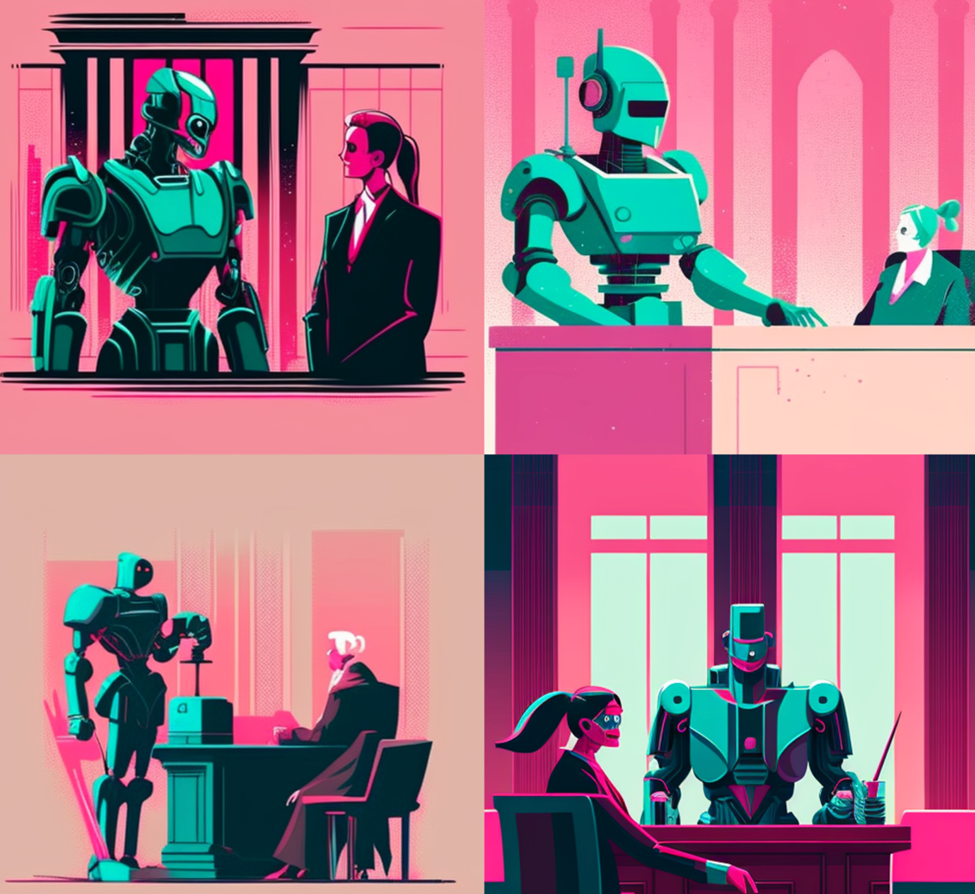Human-Centered AI in eDiscovery: How to Prevent Terminator-Level Nightmares
Attention, humans! Are you afraid of being at the mercy of soulless machines in eDiscovery and legal? Do you dream of a future where AI is not just more efficient, but more human? Well, you're not alone!
Today, we're going to explore the importance of putting the 'human' in human-centered AI for eDiscovery and legal. What better way to do that than with a little help from our favorite sci-fi movies?
When it comes to humans and AI It's not about how AI is treated, it's about how humans are treated by AI. And we need to look no further than the silver screen to understand the risks posed when the human is taken out of the driver’s seat! So, grab your popcorn and strap in, because we're about to take a ride through the multiverse of science fiction and see what lessons we can learn for the future of AI and the law.

Human-Centered AI in eDiscovery: Lessons from Sci-Fi
It feels a bit like we are entering a brave new world when it comes to the generative AI revolution. But there is plenty that we can learn from the pop culture approach to HCAI in Sci- Fi (or lack thereof) over the last several decades!

"The Terminator" - Avoiding Mindless, Uncontrollable AI
In the Terminator, powerful sentient AI travels back in time to assassinate key people fighting the AI Robot uprising. The dark dystopian missive highlights a few key characteristics of Human-centered AI. As well as the importance of keeping humans first as we develop AI-enabled technology.
- Adaptability - Although initially programmed to kill humans like Sarah Connor, the Terminator was able to change. Subsequent reprogramming and evolution of perception of the prime objective enabled a shift from destroying humans to protecting them.
- Transparency - The film also highlighted the need for humans to easily understand the potential benefits and dangers of AI. The film shows the importance of designing AI systems that are easy to understand, to avoid confusion and unintended consequences.
- Human First - AI technology and bloodthirsty cyborgs alike are merely tools that will execute the task posed to them. AI is neither ethical nor unethical, but the outcome of the tasks they perform could have a negative impact. It is the responsibility of designers and users to mitigate this.

"Ex Machina" - Avoiding the Uncanny Valley with AI
The protagonist in Ex Machina is tasked with conducting a variation of a Turing test on an AI-powered humanoid robot. The movie "Ex Machina" explores the possibility of creating AI that is indistinguishable from humans. As well as the risk of powerful AI-powered technology not placing human well-being as a prime objective.
- Accountability and Auditability - The film highlights a risk posed by fully autonomous and powerful AI that does not keep a human in the driver’s seat. Truly a black box with a human face. By allowing a system to operate without human oversite and the safety of humans as a principal tenet, the creators opened the system to achieve their goals by any means necessary, including through the destruction of human life.
- Augmenting vs replacing Human Intelligence - IN the film, no human is involved in the tasks executed by the AI system. A human-centered approach may not have passed the turning test, but it would have mitigated the risk to individual humans.

“Westworld”: Importance of Disclosing AI
This film is set in a theme park populated by androids that are designed to look and act like real people. The film raises questions about the ethics of creating AI-powered machines that are indistinguishable from humans. And the potential dangers of allowing machines to fulfill human desires and fantasies.
- Transparency: We are a long way from humanoid AI-powered technology that is sentient. But there are wide applications of AI-powered chatbots and voice-prompted tools that are nearly indistinguishable from humans. As Machine learning and AI technology become more powerful, especially with the influx of powerful large language models, this blurring of the lines is likely to increase. To mitigate this proactively disclose when Ai is involved and focus on developing explainable AI.
- Human in the Loop: This film highlights the importance of keeping humans in the loop in designing technology. As well as the importance of disclosing when Ai is being used. Humans want to know when AI is involved and can audit for accuracy, bias, and efficacy when AI was involved in decision-making. Especially when it affects something like liberty, employment, or other quality-of-life outcomes.

HCAI and the Future of Legal
What lessons can Legal take from the dystopian AI-powered nightmares posed by Hollywood? In the Human-Computer dance that was are in, the key to success is maintaining human control at a high level and in end users. As data scientists continue to build increasingly powerful AI solutions for legal problems, the key is augmenting and empowering humans not replacing them.
Legal Tech is already leveraging powerful Large language models, natural language processing, and neural networks to supercharge AI. And that is a great thing. The key is to keep higher-level legal reasoning and critical analysis squarely in the hands of human experts. And to keep the user interfaces approachable and transparent, instead of a black box!
Human-centered AI in eDiscovery ensures that AI models are transparent and explainable so that they can be audited and held accountable.

The Future is Here, Now What?
The last few months have shown that the science fiction future presented by Hollywood may not be as far afield as many of us once assumed. Law firms and in-house legal departments are looking beyond the AI hype to find practical ways to leverage existing and emerging legal technology solutions powered by AI.
This is a great thing. But we should remain cautious.
The legal profession cannot play ostrich when it comes to Artificial Intelligence. The bell cannot be un-rung and the amounts of data and complexity of problems facing legal today demand AI-powered solutions. But as legal professionals, we can demand technology that is intuitive. A human-centered approach to designing the tools and transparent and user-friendly solutions.
Machine learning models are only getting more powerful, so it is beholden on us as end users or developers of Legal AI to keep the core tenets of HCAI front and center. Human-first design of Legal AI applications, that keeps Human control and keeps human needs human objectives paramount.

